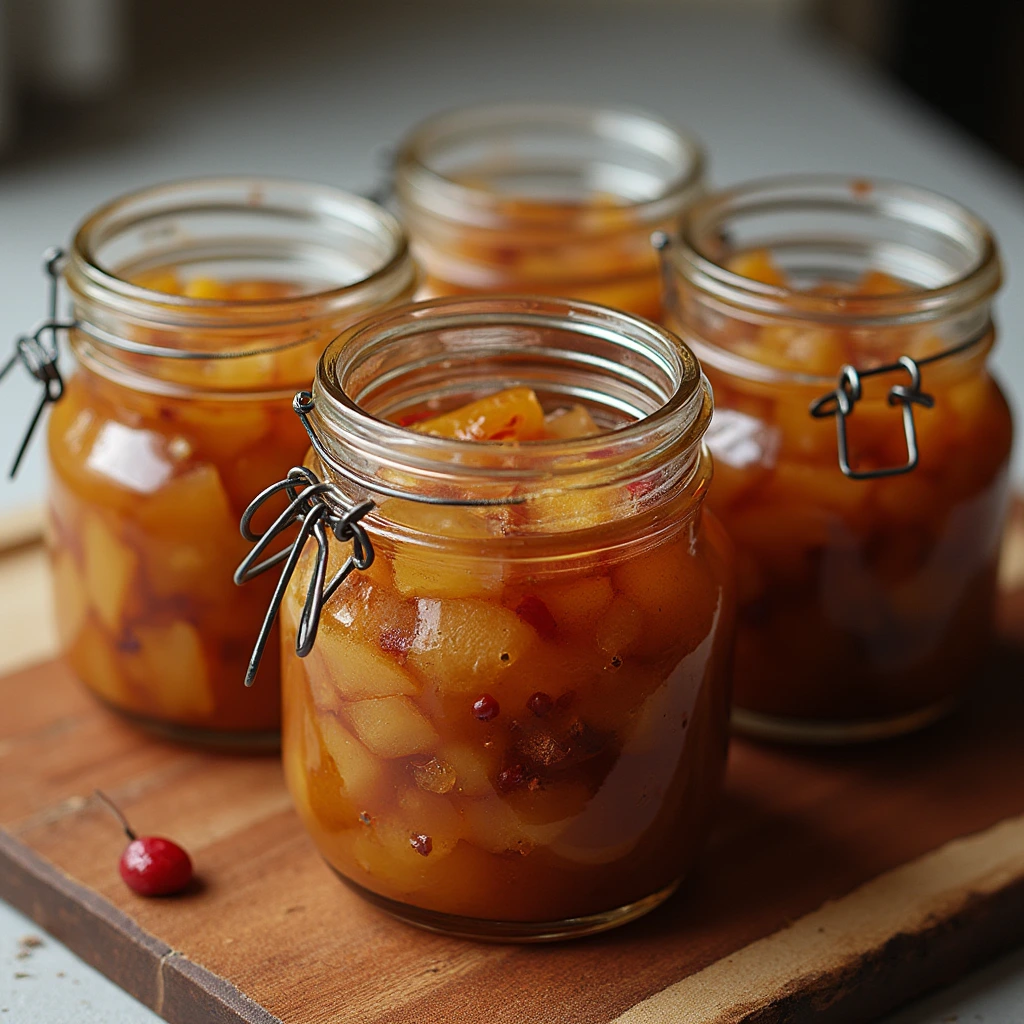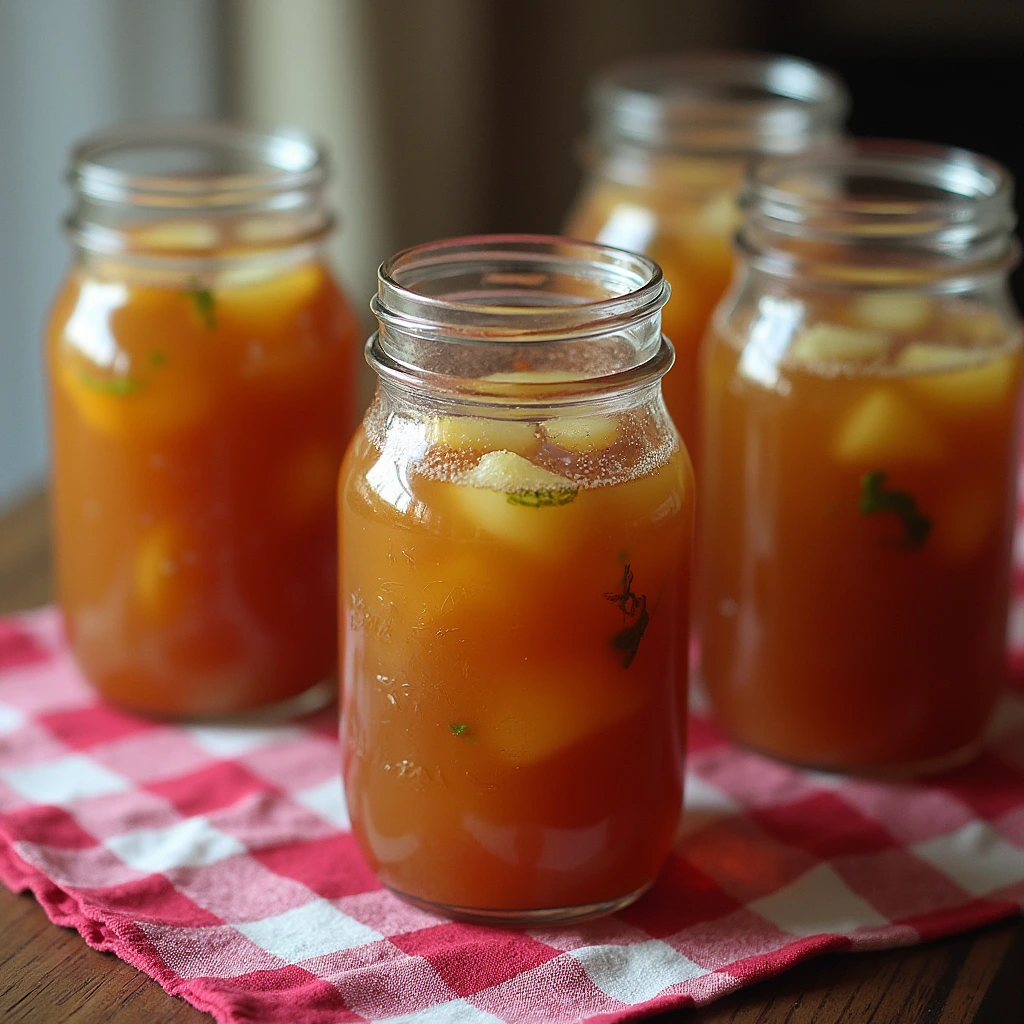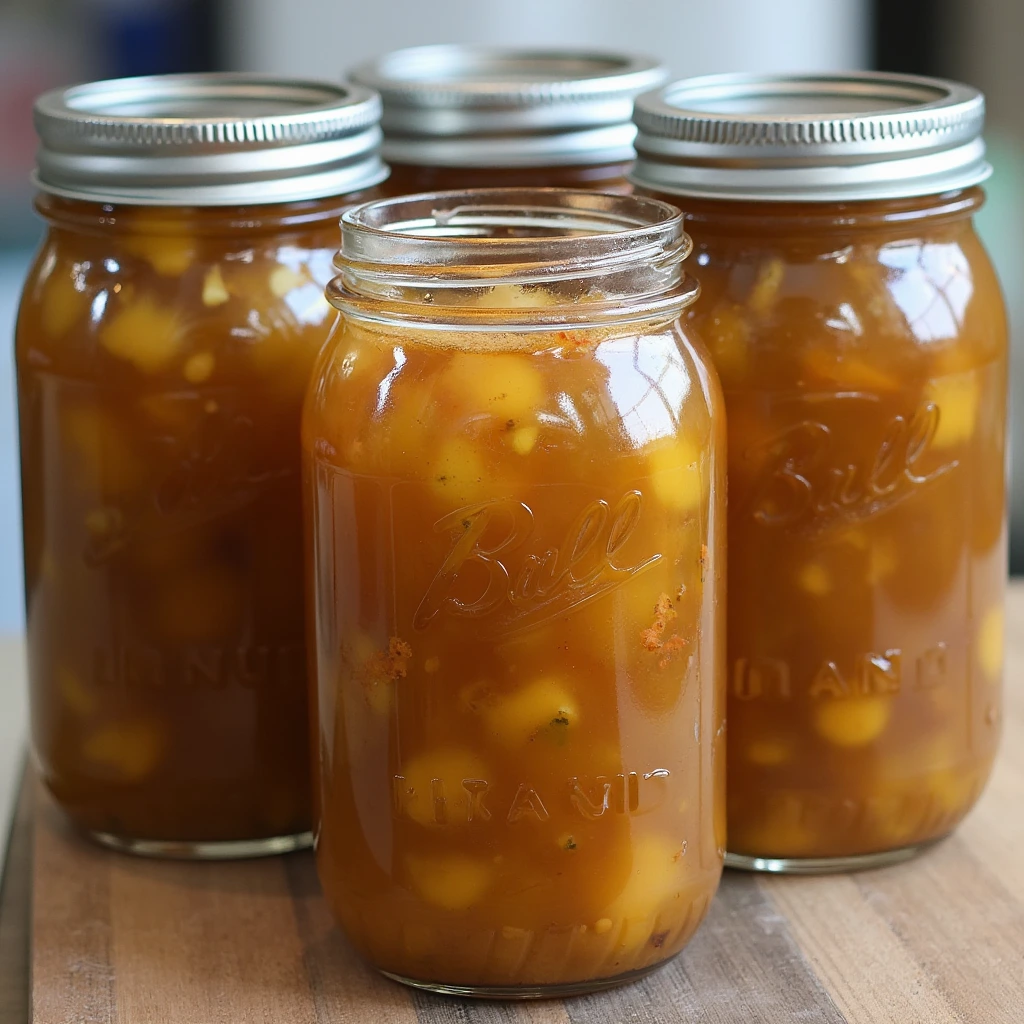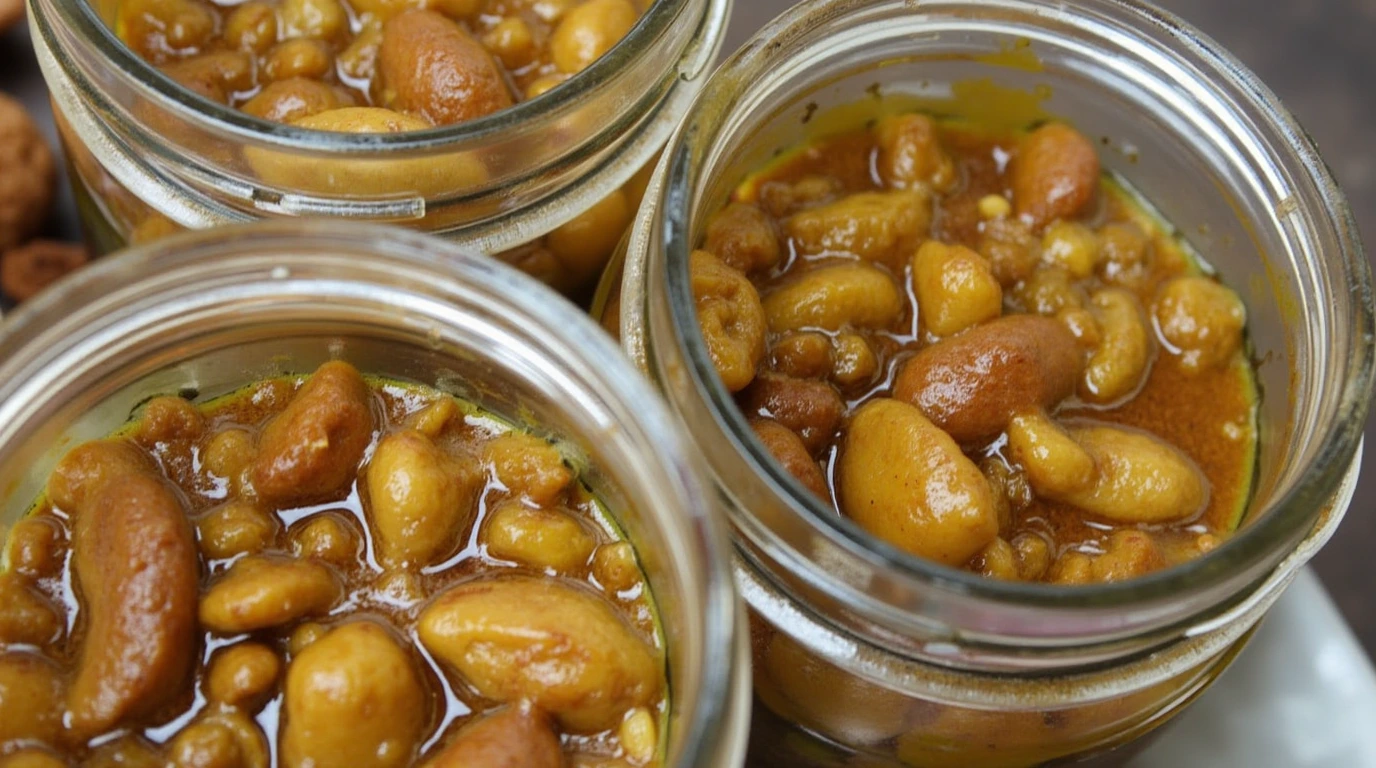Authentic Chow Chow Recipe: A Flavorful Delight for Every Occasion
Introduction to Chow Chow Recipe
Chow chow isn’t just a beloved dish; it’s a burst of flavor in every bite. This traditional recipe, deeply rooted in Southern cuisine and enjoyed globally, brings together a unique blend of tangy, sweet, and spicy flavors. Whether you’re a seasoned home chef or a culinary novice, mastering an authentic chow chow recipe is easier than you think.
This guide will walk you through every step, from selecting fresh ingredients to serving this delicious relish alongside your favorite dishes. Get ready to elevate your meals with this vibrant condiment!
What is Chow Chow?
Chow chow is a versatile relish or pickled dish typically made from a medley of vegetables like cabbage, green tomatoes, onions, and bell peppers. Its origins trace back to Southern and Appalachian kitchens, though variations can be found in Chinese and even Indian cuisines.
The charm of a chow chow recipe lies in its adaptability—it can be sweet, tangy, spicy, or a combination of all three. This condiment pairs perfectly with beans, barbecue, hot dogs, burgers, and even grilled cheese sandwiches.
Ingredients for an Authentic Chow Chow Recipe
Before you begin, ensure you have the following fresh and high-quality ingredients:
- Vegetables: Cabbage, green tomatoes, bell peppers, onions
- Spices: Mustard seeds, turmeric, celery seeds
- Acidity: White vinegar or apple cider vinegar
- Sweetener: Sugar or honey
- Salt: Pickling or kosher salt
Fresh vegetables and the right balance of spices are key to creating a perfect chow chow recipe.

Step-by-Step Guide to Preparing Chow Chow
Step 1: Prepare the Vegetables
- Finely chop cabbage, green tomatoes, onions, and bell peppers.
- Ensure all vegetables are evenly diced for consistent flavor absorption.
Step 2: Salt the Vegetables
- Place the chopped vegetables in a large bowl.
- Sprinkle with kosher salt and let them sit for a few hours or overnight to draw out excess moisture.
Step 3: Make the Pickling Brine
- In a large pot, combine vinegar, sugar, mustard seeds, turmeric, and celery seeds.
- Bring the mixture to a simmer, stirring until the sugar dissolves.
Step 4: Combine Vegetables and Brine
- Rinse and drain the salted vegetables.
- Add them to the simmering brine.
- Cook for about 15-20 minutes, stirring occasionally.
Step 5: Jar the Chow Chow
- Sterilize glass jars.
- Carefully ladle the hot chow chow mixture into jars, leaving about 1/2 inch of headspace.
- Seal tightly and process in a water bath for long-term storage.
Tips for Perfect Chow Chow
- Always use fresh, firm vegetables for the best texture.
- Adjust the sugar and vinegar balance to suit your taste preferences.
- Allow chow chow to sit for at least a week before consuming to let the flavors meld together.
Variations of Chow Chow Recipe
- Sweet Chow Chow: Add extra sugar or use honey.
- Spicy Chow Chow: Include chopped jalapeños or red pepper flakes.
- Green Tomato Chow Chow: Focus primarily on green tomatoes for a tangier flavor.
Serving Suggestions for Chow Chow
Chow chow is incredibly versatile. Here are some delightful ways to serve it:
- As a topping for hot dogs or burgers
- With fried fish or grilled chicken
- Mixed into potato or pasta salads
- Alongside Southern-style beans and cornbread
Health Benefits of Chow Chow
This condiment isn’t just about flavor; it packs a nutritional punch:
- Rich in antioxidants from fresh vegetables
- A good source of dietary fiber
- Contains probiotics if naturally fermented
How to Store Chow Chow Properly
- Refrigeration: Store opened jars in the fridge for up to 2 months.
- Pantry Storage: Sealed jars can be stored in a cool, dark place for up to a year.
Chow Chow Recipe: A Culinary Tradition Worth Preserving
Cooking chow chow isn’t just about preparing food—it’s about preserving culinary heritage. Every batch tells a story of tradition, love, and flavor passed down through generations.
FAQs
What vegetables can I use in a chow chow recipe?
You can use cabbage, green tomatoes, bell peppers, onions, carrots, and even cucumbers.
How long does homemade chow chow last?
When properly sealed and stored, it can last up to a year. Opened jars should be consumed within 2 months.
Can I make chow chow without sugar?
Yes, you can use honey or other natural sweeteners as an alternative.
Is chow chow spicy?
It depends on the recipe. You can make it mild or add jalapeños for extra heat.
Can I freeze chow chow?
Freezing is not recommended, as it may affect the texture.
Is chow chow a side dish or condiment?
Chow chow works beautifully as both!
Conclusion
Mastering an authentic chow chow recipe isn’t just about following steps—it’s about creating a dish that embodies flavor, tradition, and versatility. Whether you’re a culinary enthusiast or a home cook looking to add a special touch to your meals, chow chow is a recipe worth exploring.
Embrace the process, experiment with flavors, and most importantly, enjoy every tangy, sweet, and spicy bite!
Exploring Regional Variations of Chow Chow Recipe
Chow chow isn’t a one-size-fits-all recipe—it varies across regions, reflecting local ingredients, traditions, and flavors. From the sweet and tangy Southern-style chow chow to the spicier Northern variations, each region adds its unique twist to this timeless relish.
Southern Chow Chow
The classic Southern-style chow chow typically leans on sweeter notes, with ingredients like sugar and apple cider vinegar balancing the tanginess. It’s a staple in Southern households, often served with black-eyed peas or cornbread.
Northern Chow Chow
In the Northern regions, chow chow tends to have a sharper, tangier profile. It uses more vinegar and less sugar, making it an ideal accompaniment to hearty dishes like sausages and smoked meats.
Amish Chow Chow
The Amish version of chow chow is a pickled vegetable medley featuring green beans, corn, cauliflower, and carrots. This version is often sweeter and served as a side dish during large family meals.
Chinese Chow Chow
While vastly different from its Western counterpart, Chinese chow chow refers to stir-fried vegetables or preserved vegetable sauces, often paired with rice or noodles.
Understanding these regional differences allows you to tweak your chow chow recipe to suit your preferred taste profile.
Why Homemade Chow Chow is Better Than Store-Bought
In an era of convenience, store-bought chow chow might seem like an easy option, but homemade chow chow surpasses it in quality, flavor, and nutritional value.
- Fresh Ingredients: Homemade chow chow uses fresh, seasonal produce.
- No Preservatives: Store-bought versions often contain artificial preservatives.
- Customizable: Adjust sweetness, tanginess, and spice levels to your taste.
- Cost-Effective: Making chow chow at home is often more affordable.
The satisfaction of crafting your own chow chow relish, knowing every ingredient that went into it, is unmatched.

Common Mistakes to Avoid When Making Chow Cho
Even seasoned cooks can make mistakes when preparing chow chow. Here are some common pitfalls and how to avoid them:
- Overcooking Vegetables: Keep an eye on cooking time to maintain texture.
- Skipping the Salting Step: This step is crucial for removing excess moisture.
- Improper Sealing: Always ensure your jars are properly sterilized and sealed.
- Neglecting Flavor Balance: Taste the brine before adding vegetables to ensure a good balance of sweet, tangy, and salty flavors.
Avoiding these mistakes ensures your chow chow recipe turns out perfect every time.
Chow Chow as a Gift Idea
Homemade chow chow isn’t just a culinary delight—it also makes for a thoughtful gift. Pack it in a beautifully labeled mason jar, tie a ribbon around it, and voila! It’s a charming, homemade present for family and friends during holidays, birthdays, or any special occasion.
Add a personalized recipe card with serving suggestions, and you have a gift that’s both thoughtful and practical.
Sustainability and Chow Chow Recipe
One of the lesser-discussed aspects of making chow chow is its contribution to reducing food waste. This relish is an excellent way to use up surplus vegetables from your garden or leftovers from other recipes.
- Reduce Food Waste: Use slightly overripe vegetables that might otherwise go to waste.
- Seasonal Produce: Make chow chow in large batches during harvest season.
- Eco-Friendly Storage: Use reusable glass jars instead of plastic containers.
Incorporating sustainable practices into your chow chow recipe makes the process even more rewarding.
Pairing Chow Chow with Different Cuisines
While chow chow is deeply rooted in Southern cuisine, its versatile flavor profile allows it to complement dishes from various culinary traditions:
- American Cuisine: Serve with burgers, hot dogs, or grilled cheese sandwiches.
- Indian Cuisine: Pair with spicy curries or rice dishes.
- Mexican Cuisine: Add a spoonful on tacos for an extra tangy twist.
- Asian Cuisine: Use as a side for stir-fried rice or noodle dishes.
Experiment with different cuisines, and you’ll discover just how adaptable chow chow can be.
Is Chow Chow Vegan and Gluten-Free?
Yes! A traditional chow chow recipe is both vegan and gluten-free, making it suitable for a variety of dietary preferences.
- Vegan-Friendly: Made entirely from vegetables, vinegar, and spices.
- Gluten-Free: Contains no wheat-based products or additives.
However, always double-check store-bought vinegar brands to ensure no gluten-containing additives are present.
Chow Chow and Food Preservation Traditions
Chow chow isn’t just a relish—it’s a symbol of traditional food preservation techniques passed down through generations. Canning, fermenting, and pickling have long been methods for preserving surplus produce and extending shelf life without refrigeration.
Mastering the art of making chow chow connects you to a long-standing culinary tradition that values resourcefulness and flavor.
How to Adjust Spice Levels in Chow Chow Recipe
Everyone has a different spice tolerance, and the beauty of chow chow lies in its flexibility.
- For a Spicier Chow Chow: Add red pepper flakes, jalapeños, or hot sauce.
- For a Milder Version: Reduce mustard seeds and skip spicy peppers.
- For Balanced Heat: Include both sweet and spicy peppers.
Start with smaller amounts and adjust gradually—you can always add more spice, but you can’t take it out!
The Perfect Chow Chow Brine Ratio
The brine is the heart of any chow chow recipe. A standard brine ratio often includes:
- 1 part vinegar
- 1 part sugar
- 1 tablespoon salt per quart of vegetables
Adjust these ratios based on your desired level of sweetness or tanginess.

Final Thoughts on the Chow Chow Recipe
Whether you’re a seasoned home chef or just starting your culinary journey, the chow chow recipe is a must-try. Its blend of sweet, tangy, and spicy flavors makes it a beloved condiment across cultures and cuisines.
So, roll up your sleeves, gather your ingredients, and start crafting your own batch of homemade chow chow. It’s not just a relish—it’s a jar of culinary tradition and love.
Creative Ways to Use Chow Chow in Everyday Meals
Chow chow is far more than just a simple relish; it’s a culinary chameleon that can effortlessly elevate both traditional and modern dishes. Its versatility allows it to shine as a star ingredient or complement existing flavors in a dish. Here are some creative ideas for incorporating chow chow into your daily meals:
Breakfast Ideas with Chow Chow
- Chow Chow Omelette: Add a spoonful of chow chow into your omelette for a tangy kick.
- Avocado Toast: Spread avocado on toast and top with chow chow for a delightful crunch.
- Breakfast Hash: Mix chow chow with potatoes, onions, and eggs for a vibrant morning skillet dish.
Lunch Recipes Featuring Chow Chow
- Grilled Cheese Sandwich: Spread chow chow inside your sandwich for an extra burst of flavor.
- Salad Booster: Add chow chow as a topping to green or pasta salads.
- Wraps and Burritos: Use chow chow as a zesty condiment in wraps or burritos.
Dinner Enhancements with Chow Chow
- Grilled Meats: Serve chow chow as a topping for grilled chicken, pork chops, or fish.
- Burgers and Hot Dogs: Use chow chow as a relish replacement for classic barbecue fare.
- Stir-Fry Dishes: Mix chow chow into stir-fried vegetables for an extra layer of flavor.
Snacks and Appetizers
- Cheese Platter Companion: Pair chow chow with aged cheese and crackers.
- Deviled Eggs: Top deviled eggs with a spoonful of chow chow.
- Stuffed Mushrooms: Add chow chow to the filling for a tangy surprise.
These ideas showcase how a humble jar of chow chow can enhance a wide array of dishes across different meals.
Chow Chow Recipe for Canning: Long-Term Storage Guide
Proper canning is essential to ensure your chow chow stays fresh, safe, and delicious for months. Here’s a step-by-step guide:
Canning Equipment Checklist
- Mason jars with lids
- Large pot for boiling
- Jar lifter
- Canning funnel
- Clean cloth
Step-by-Step Canning Process
- Sterilize Jars: Boil mason jars in hot water for 10 minutes.
- Fill Jars: Carefully ladle hot chow chow into jars, leaving 1/2 inch of headspace.
- Remove Air Bubbles: Use a non-metallic tool to eliminate air pockets.
- Seal Jars: Wipe jar rims clean, secure lids tightly, and place them in the canner.
- Water Bath: Boil jars in a water bath for 10-15 minutes to seal them properly.
- Cool and Store: Allow jars to cool at room temperature. Check seals before storing.
Storage Tips:
- Store jars in a cool, dark pantry.
- Label each jar with the date for reference.
- Consume within 12 months for optimal freshness.
Canning ensures you have homemade chow chow ready to enjoy anytime, preserving the flavors of seasonal produce.
The History and Origins of Chow Chow
The origins of chow chow are fascinating, with influences from Southern American cuisine, Chinese immigrants, and even French culinary traditions.
Southern Heritage
In the Southern United States, chow chow became a staple during harvest season, allowing families to preserve excess vegetables before winter.
Chinese Influence
Chinese immigrants brought their own preserved vegetable dishes, which influenced the pickling techniques used in chow chow.
French Roots
The name “chow chow” is believed to have come from the French word chou, meaning cabbage.
This rich cultural history highlights chow chow’s unique journey from a practical preservation method to a beloved culinary staple.
Nutritional Breakdown of Chow Chow
Chow chow isn’t just delicious—it’s also packed with essential nutrients.
| Nutrient | Benefit |
|---|---|
| Vitamin C | Boosts immunity and skin health |
| Dietary Fiber | Aids digestion and promotes gut health |
| Antioxidants | Fights free radicals and reduces inflammation |
| Low Calories | Ideal for calorie-conscious diets |
Dietary Benefits
- Suitable for vegan and gluten-free diets
- Low in fat and calories
- Packed with essential vitamins and minerals
Adding chow chow to your meals not only enhances flavor but also contributes to a balanced, nutritious diet.
Sustainable Practices in Making Chow Chow
Sustainability goes hand in hand with making homemade chow chow. Here are some eco-friendly tips:
- Use Local Produce: Support local farmers and reduce your carbon footprint.
- Reuse Glass Jars: Sterilize and reuse mason jars instead of buying new ones.
- Compost Scraps: Vegetable peels and unused parts can be composted.
- Batch Cooking: Prepare larger batches to reduce energy usage.
By adopting sustainable practices, you can make your chow chow recipe more environmentally friendly.
Chow Chow for Special Diets
Chow chow is naturally adaptable to various dietary needs:
- Low-Sodium Version: Reduce salt during the pickling process.
- Sugar-Free Option: Use natural sweeteners like stevia or monk fruit.
- Keto-Friendly: Adjust sugar content to align with a low-carb diet.
Chow chow can seamlessly fit into almost any lifestyle or dietary plan.
Frequently Asked Questions About Chow Chow Recipe
Is chow chow the same as piccalilli?
No, piccalilli typically includes turmeric and has a slightly different flavor profile.
How long should chow chow sit before eating?
Allow chow chow to sit for at least one week to let the flavors fully develop.
Can I freeze chow chow?
Freezing isn’t recommended, as it can alter the texture.
Is chow chow spicy?
It depends on the recipe—some versions are mild, while others include spicy peppers.
Can I use apple cider vinegar instead of white vinegar?
Yes, apple cider vinegar adds a slightly sweeter tang.
What’s the best way to serve chow chow?
It’s perfect as a condiment for hot dogs, burgers, or Southern-style dishes.
Final Words on Chow Chow Recipe
The chow chow recipe isn’t just a dish—it’s a celebration of flavors, cultures, and traditions. Whether you’re making it for personal enjoyment, gifting it to loved ones, or preserving vegetables from your garden, chow chow offers a delightful culinary experience.
So, grab your vegetables, spices, and mason jars, and start crafting your very own batch of this timeless relish. With every spoonful, you’ll taste the love, care, and heritage poured into each jar.
Follow us for recipes on Facebook

